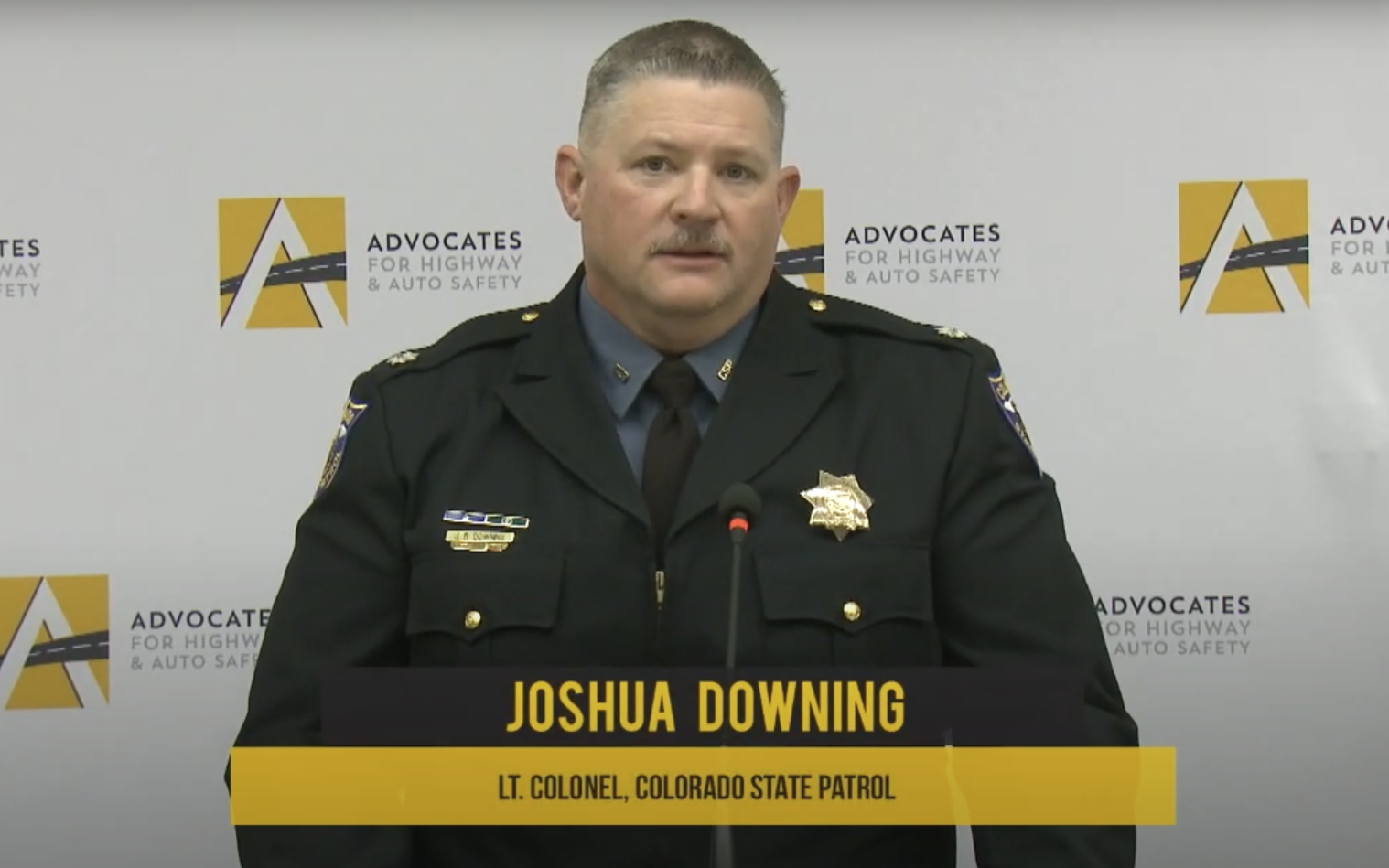
9News/YouTube

Audio By Carbonatix
Colorado passed a host of laws in recent years intended to make the state’s roads safer, from banning hand-held cell phones while driving to allowing motorcycle lane filtering – but there is more work to be done, a new report suggests.
The state’s traffic safety laws are still “dangerously” inadequate for occupant protection, child passenger safety and young drivers, according to a national analysis by Advocates for Highway and Auto Safety released on December 5. Colorado received a “red light” rating in those three categories, and the state got a “yellow light” grade overall when all six categories were included.
“With traffic fatalities at alarmingly high levels and effective solutions within reach, we offer this report to turn around the drastic and deadly consequences of crashes,” says Cathy Chase, president of Advocates for Highway and Auto Safety. “We all think [they] will never happen to us until they do.”
In 2022, Colorado tallied the most roadway deaths the state had seen in over forty years, with 764 fatalities, according to the Colorado Department of Transportation. Traffic fatalities have been on a downward trend since, hitting 720 in 2023 and 613 so far in 2024.
Denver, make your New Year’s Resolution Count!
We’re $14,000 away from our End-of-Year campaign goal, with just a few days left! We’re ready to deliver — but we need the resources to do it right. If Westword matters to you, please contribute today to help us expand our current events coverage when it’s needed most.
Nearly 40 percent of this year’s deadly car crashes involved victims who were not wearing seat belts.
In Colorado, back-seat passengers do not have to buckle up if they’re at least sixteen years old and riding with an adult driver. Colorado’s seat belt laws receive secondary enforcement, meaning drivers and front-seat passengers can be ticketed for not wearing seat belts if they’re stopped for another traffic violation, but they cannot be pulled over just for not wearing a seat belt. Those laws earned Colorado its red light rating for occupant protection.
“There is still more to do,” says Lieutenant Colonel Joshua Downing of the Colorado State Patrol. “There are ways that we can require more people to wear seat belts and buckle up. That would save lives, for sure.”
Colorado got the red light rating for child passenger safety because it does not require children under thirteen to sit in the back seat, only stipulating that infants younger under a year old and lighter than twenty pounds ride in the back. Also, its booster seat requirement ends when a child reaches the age of eight, instead of 57 inches in height, as traffic safety advocates recommend.
The state also received the lowest rating in young driver safety because it does not have any of the so-called “optimal laws” recommended by advocates: age limits of sixteen for a learner’s permit and seventeen for an unrestricted license; seventy hours of behind-the-wheel training required before getting a license; a ban on unsupervised teen driving after 8 p.m.; and a ban on non-familial teen passengers riding with unsupervised teen drivers.
Colorado got a yellow light rating for distracted driving protections, and a green light for automated traffic law enforcement and for impaired-driving laws. That earned the state a yellow light overall, aligning Colorado with 34 other states. Six states got green light overall ratings and nine states got red light ratings.
While the report applauded Colorado’s impaired driving laws, Downing says he wants the state to do more. Over 30 percent of Colorado’s traffic fatalities this year involved suspected impaired drivers, according to the Colorado Department of Transportation.

Lieutenant Colonel Joshua Downing speaks during a press conference on the 2025 Roadmap to Safety Report on Thursday, December 5.
Advocates for Highway and Auto Safety
“Impaired driving remains a plague on our public roads,” Downing says. “We can do a better job.”
Downing says he wants state legislators to expand requirements for ignition interlock devices, lowering the threshold for when impaired drivers are required to install the devices on their vehicles to prevent them from driving under the influence in the future. He also wants the legal blood alcohol concentration limit to be lowered from the current 0.08 percent to 0.05 percent.
The new traffic safety report is intended to inspire state lawmakers across the country to take action during the 2025 legislative session, which begins on January 8 in Colorado.
“Save lives in 2025,” says Jack Gillis of the Advocates for Highway and Auto Safety board of directors. “Progress can be made toward a future where everyone gets home safely every time.”
Some local governments are working to address dangerous driving behaviors themselves. For more than eight years, Denver has been working to eliminate traffic deaths in the city by 2030 as part of the Vision Zero plan. But since the city officially committed to the plan in 2016, deaths have continued to climb. In 2015, 58 people died on Denver roads, compared to 83 in 2023.